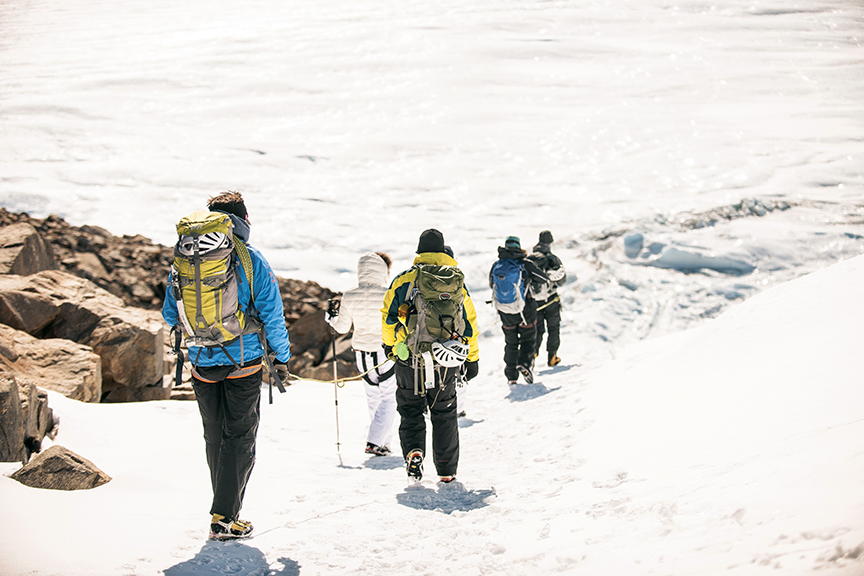
White Desert itineraries are designed as a “choose-your-own-adventure” experience. Each day, field guides suggest excursions and activities for guests to choose from — whether relaxing, such as a gentle trek to view ice wave formations, or challenging, such as technical rock climbing. All photos courtesy White Desert.
For those wanting to explore Antarctica — and not just from a cruise ship — there is a way to do it without giving up creature comforts.
By Sarah Binder
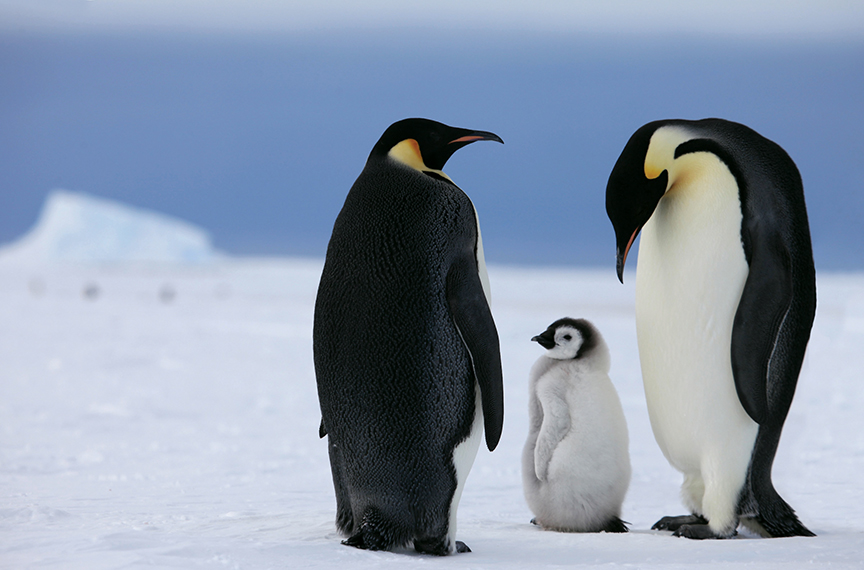
Adventure and luxury do not always go hand in hand. In the farthest reaches of the Earth, you might expect to find only one or the other. However, a few times a year, a dozen in-the-know travelers find both — in the interior of Antarctica.
Founded and led by CEO Patrick Woodhead, who helmed the first ever east-to-west traverse of Antarctica in a total of 75 days, White Desert is the first and only luxury camp in the interior of Antarctica. While most travelers to the seventh continent arrive, eat, sleep, and depart on a cruise ship, White Desert flies its guests to a fully functional, eco-friendly luxury camp in the virtually untouched interior, where they experience awe-inspiring and adrenaline-pumping activities.
The idea for White Desert came to Woodhead organically, as he and three teammates waited out a multi-day storm in a small tent during a traverse of the continent. Realizing that travelers may be interested in the “real” Antarctica, Woodhead and his teammates envisioned an old world-style camp that would provide a high level of comfort to intimate groups.
Whichaway camp, which is celebrating its 10th anniversary with a complete overhaul, boasts six heated fiberglass sleeping pods that house two people each.
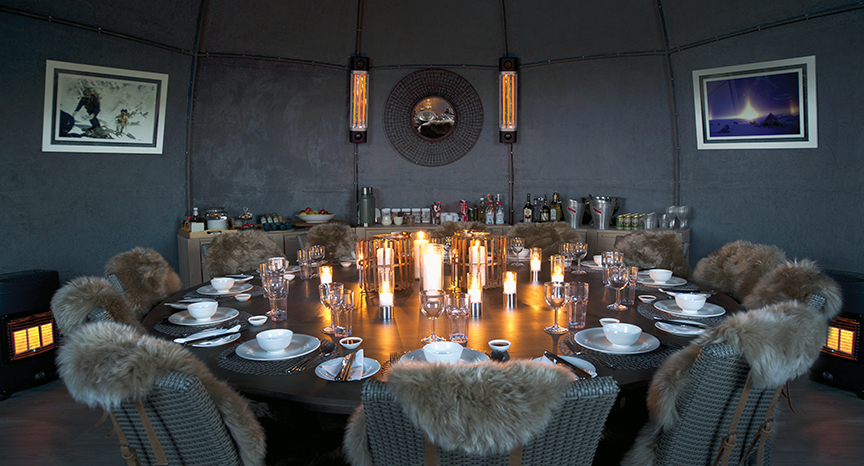
Whichaway Camp celebrated its 10th anniversary this year with a compete makeover, including in the old-world, Game of Thrones-style dining room, where guests savor homemade three-course meals.
“There are only 12 guests at one time, and there is a member of staff per client,” explains Richard Godden, White Desert’s client and media relations manager.
“The camp recently has been refurbished with luxury fabric headboards, Saarinen chairs, fur throws, and extended en suite bathrooms stocked with sustainable toiletries, created by our friend and fellow polar explorer David de Rothschild’s Lost Explorer brand,” says Godden. “It might be surprising to guests to have solar-powered hot water!”
In the cozy communal dining room, guests refuel by savoring three-course meals every night, prepared with ingredients from Cape Town by Chef Justine Lindsay, who studied at the Institute of Culinary Arts in Stellenbosch, South Africa. A library and lounge offer the opportunity to recharge electronic devices and relax with a book after a physically demanding ice climb.
“People often have a fascination and curiosity about Antarctica from their school days. It is such a wondrous ‘white desert’ landscape that is in total contrast to what we are familiar with,” explains Marcel Knobil, founder of VeryFirstTo, a website that enables its members to be the first to learn of and indulge in newly launching luxury products and experiences.
“While Antarctica traditionally has been associated with harsh conditions and uncomfortable travel, White Desert’s Emperors & South Pole oozes with indulgent comforts and smooth, luxurious travel,” he says. VeryFirstTo, which also creates its own bespoke travel experiences, connects its interested members to White Desert, as well as offers advice on how to maximize enjoyment of their experience.
White Desert’s expeditions begin in Cape Town, South Africa, arriving at Whichaway Camp via a five-and-a-half-hour direct flight. The Emperors & South Pole itinerary lasts eight nights, at 64,000 euros, all-inclusive, per person. This year, White Desert was offering four of the excursions, all during November and December, the brief window of time suitable for travel to Antarctica’s interior. As of October, two of the four journeys were sold out.
“Clients staying at our camp are the only people who can visit the 6,000-strong emperor penguin colony and their young chicks at Atka Bay, ” explains Godden.
Viewing remote wildlife is just the tip of the iceberg. Each day, clients can select from a number of excursions and activities guided by genuine polar explorers, from exploring iridescent blue ice caves and tunnels to ice and rock climbing, kite-skiing, traversing lakes, and more. The most ambitious guests can take a trip to the South Pole, which entails a six-hour flight from camp, including a fuel stop, in order to reach the lowest place on Earth. There they are treated to a tour of the Amundsen-Scott America research station.
White Desert’s itineraries have sold out for the past five seasons, says Godden, and the company has guided hundreds of travelers, including household names Prince Harry and Bear Grylls, to Antarctica’s interior. The team ensures all of its clients are well-equipped, assisting with last-minute preparations in Cape Town.
“We provide each client with a recommended kit list for their journey; they can either bring existing gear or order our recommendations via our clothing supplier in Cape Town,” says Godden. The team also meets clients and hosts a safety briefing the day before departure.
White Desert not only is cognizant of its guests’ comfort and safety; it also goes to great lengths to protect the continent itself. Going beyond the environmental tourism guidelines outlined in the Antarctic Treaty, White Desert operates under a self-imposed zero-impact policy.
“All human waste is transported out on regular flights and disposed of responsibly in South Africa. A significant portion of the camps is powered by renewable energy, using photovoltaic solar panels for electrical supply and solar water heaters for the shower system,” Godden says. “In addition, White Desert is an accredited CarbonNeutral® company. We offset all emissions through a portfolio of carbon projects for our flights to Antarctica and the associated logisitics once there.”
Providing a high-end experience that leaves a sensistive wilderness intact is no small feat. “The main challenge for providing a luxurious experience and also with the completion of the renovation was the coordination of logistics — to get all of the items to the flight and then bring them in specialized vehicles to the camp,” Godden explains. “The cost per kilogram for cargo is around 14 euros, which means that is very expensive to make it all happen.”
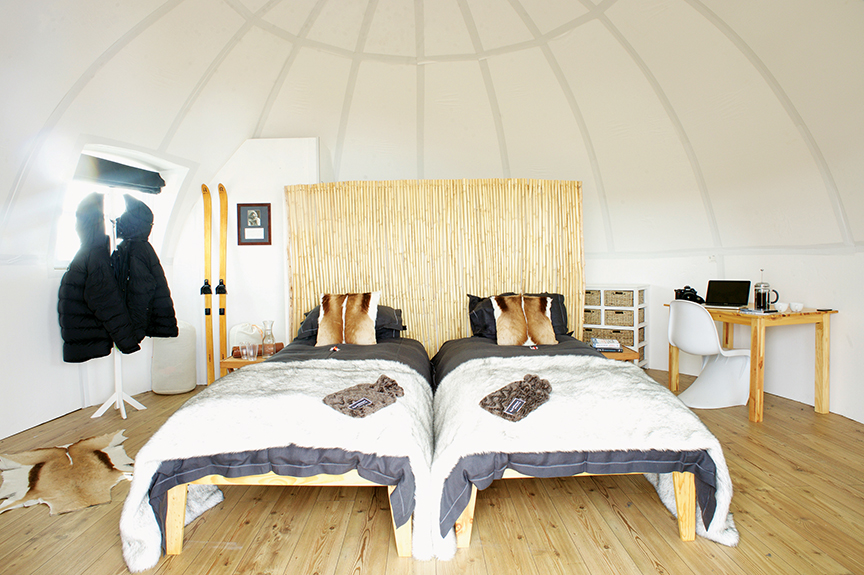
With just six brand-new state-of-the-art sleeping pods at Whichaway Camp, each White Desert adventure is comprised of a small group of 12 travelers. At 20-plus feet in diameter, the sleeping pods also offer a private wash area and toilet.
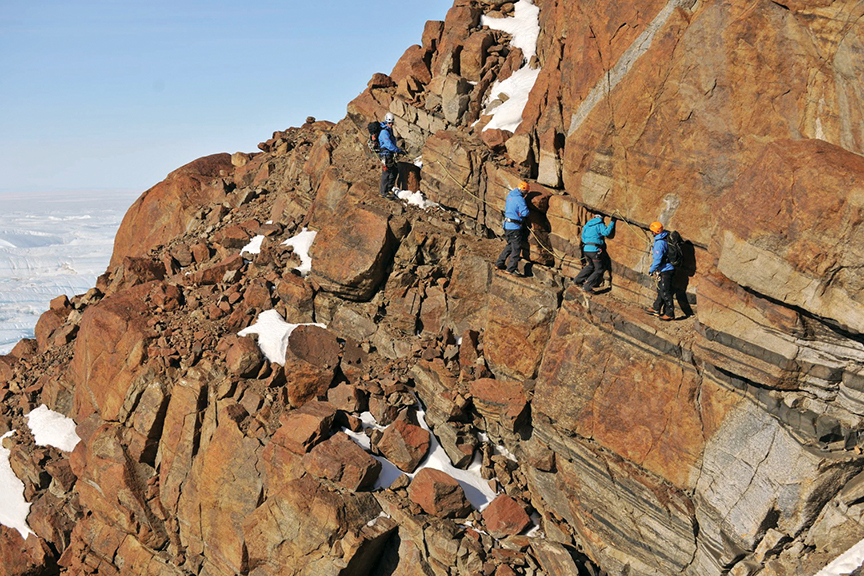
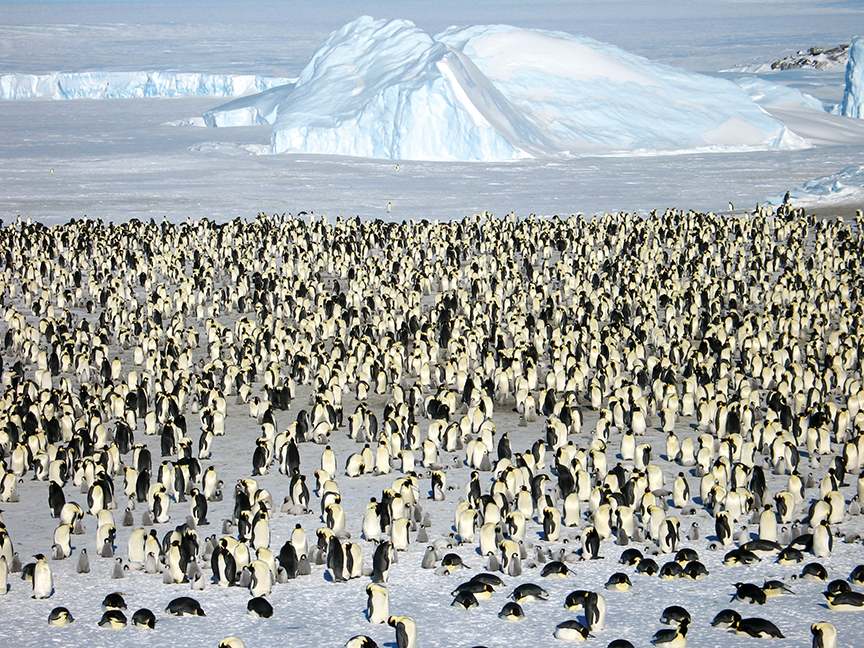
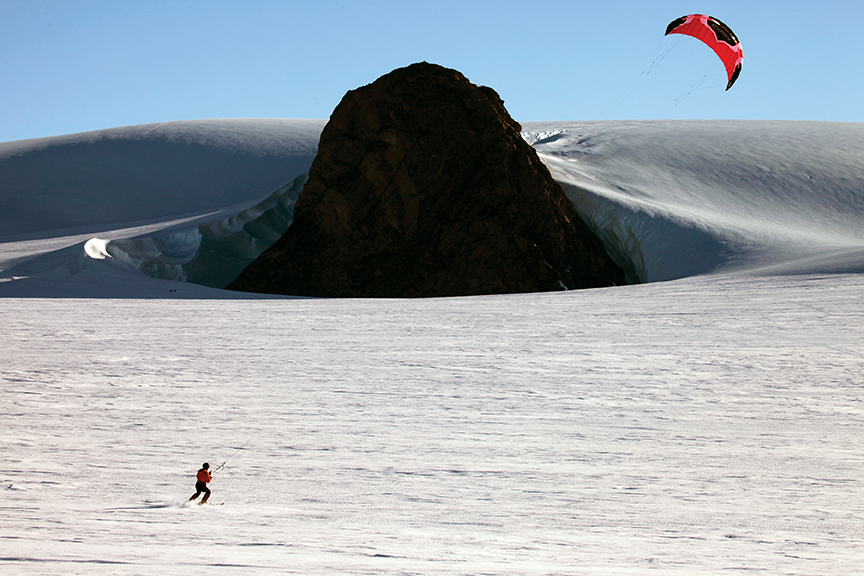


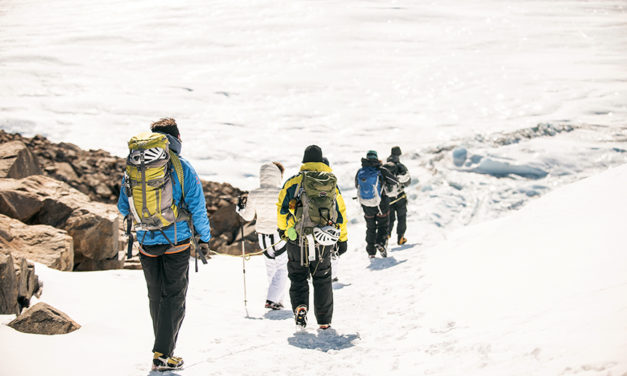
Leave a Reply